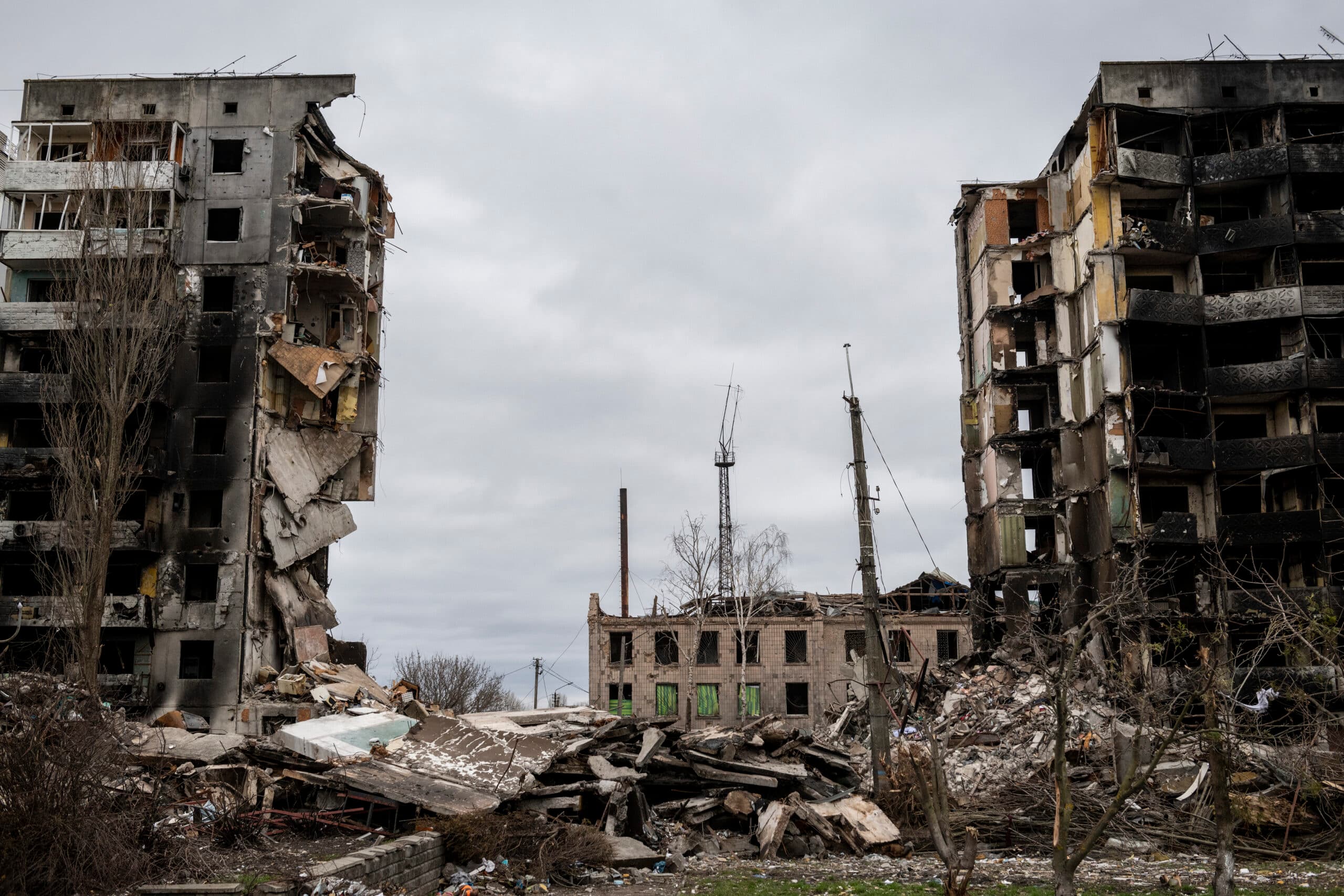
Statement on Sumy and Kryvyi attacks
15 April 2025The IHL Centre expresses concern on the use of cluster munitions and other explosive weapons in populated areas.
On April 13 2025, the Ukrainian city of Sumy was struck by two Russian Iskander-M ballistic missiles during Palm Sunday morning. Reports indicate that at least 34 civilians were killed and over 100 injured. The attack hit a bus and university conference centre at 10.20am local time, causing extensive damage to surrounding residential buildings, public infrastructure, and vehicles.
Preliminary evidence indicates that the missiles were equipped with cluster munitions, which disperse multiple explosive submunitions over a wide area, creating significant risks to civilians. This is the second recent attack in which Russia is accused of using cluster munitions in populated areas. On 4 April, nine adults and nine children were killed when a Russian ballistic missile equipped with cluster munitions struck a children’s playground in Kryvyi Rih.
What are cluster weapons?
Cluster munitions are a weapon that releases multiple smaller submunitions over a wide area, often from rockets, missiles, or aircraft. These submunitions are designed to explode on impact, but many fail to detonate leaving unexploded submunitions scattered over the affected area. Cluster munitions, due to their wide-area effects and high dud rates, are inherently imprecise and unpredictable, especially in populated areas. Their use makes it extremely difficult to limit the effects of an attack and foresee the full extent of civilian harm.
Women, children, persons with disabilities, and older persons are particularly at risk of harm due to limited mobility and access to shelter. Owing to their smaller bodies children are seven times more likely than adults to die from blast injuries. Furthermore, cluster munitions pose long-term danger to civilians that remain in the area as they frequently fail to all explode on impact, leaving behind lethal unexploded submunitions, posing a long-term threat akin to landmines.
Legal context: Why the use of cluster munitions in populated areas is likely unlawful under International Humanitarian Law
Russia nor Ukraine are parties to the Convention on Cluster Munitions, which bans the use, production, transfer, and stockpiling of cluster munitions. Nevertheless, as parties to an international armed conflict, both Russia and Ukraine are bound by International Humanitarian Law (IHL) which does regulate the use of all weapons in conflict.
IHL obligates parties to distinguish at all times between civilians and combatants. Attacks directed at civilians or civilian objects are prohibited at all times. Attacks are only permitted if they target military objectives. Indiscriminate attacks—those that fail to distinguish between civilian and military targets or that cannot be precisely directed— are strictly prohibited. As cluster munitions cannot be precisely directed, and when used in a populated area are likely to cause significant harm civilians and civilian objects, the use of these weapons is likely not to meet the requirement of distinction under IHL and to therefore be unlawful.
Furthermore, in accordance with IHL all attacks must also be proportionate – meaning before an attack is launched those launching the attack must must determine whether the anticipated harm to civilians and civilian infrastructure would be disproportionate to the anticipated military advantage. It is prohibited to launch an attack that would be disproportionate in its harm on civilians. In populated areas, the use of cluster munitions – indeed all explosive weapons with large blast radius - is likely to be disproportionate, as the anticipated harm to civilians and civilian objects would be excessive in relation to any concrete military advantage.
Finally in accordance with the IHL rule on precautions, parties to a conflict must take all feasible precautions in the choice of means and methods of warfare to avoid, or at least minimize, incidental harm to civilians and civilian objects when planning and launching an attack. Cluster munitions, due to their wide-area effects and high dud rates, are inherently imprecise and unpredictable, especially when used in densely populated areas. The availability of more precise alternative weapons further suggests that their use would be unlawful in areas where civilians are present.
In light of the above, the IHL Centre, a member of the International Network on Explosive Weapons, calls on the parties to adhere to their IHL obligations and cease the use of cluster munitions and other explosive weapons in populated areas. More broadly, the parties must also refrain from any military activities that would lead to a high level of civilian harm.
We also call on the international community to uphold IHL by condemning, investigating, and holding accountable those responsible for indiscriminate and disproportionate attacks.
The suffering and long-term harm caused to civilians by cluster munitions are not only tragic—they are avoidable. Upholding IHL is essential to protecting civilians and restoring human dignity in times of conflict.
Should you require further information or IHL advocacy support on these attacks please do not hesitate to contact our IHL Advisory Service. For queries regarding this statement please contact the Centre’s communication advisor.